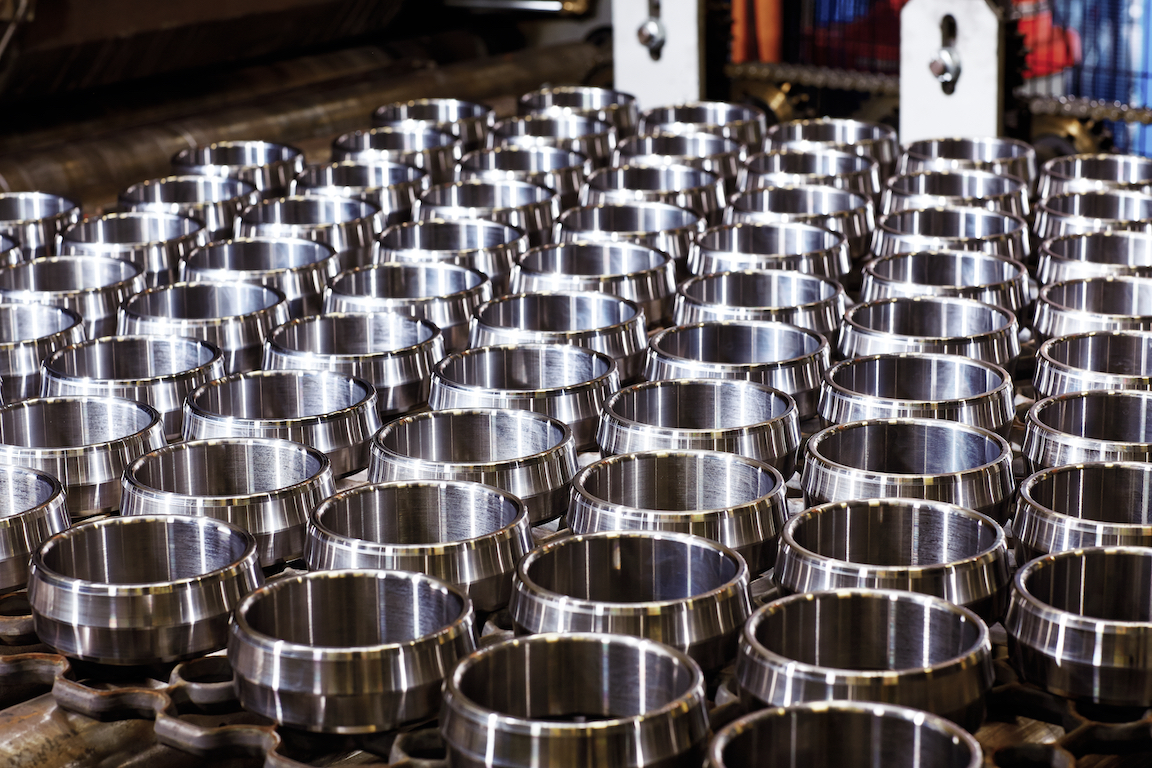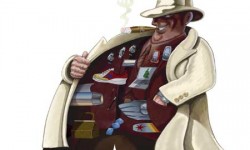
Counterfeit copies of products not only destroy the value of the trusted brands that they imitate, but they also put the businesses and lives of unsuspecting purchasers at risk.
Your correspondent is about to make a confession: He once bought a counterfeit ski jacket. It was not intentional. The garment seemed as if it might be the genuine article, only with a slight price advantage – although the place of purchase (a roadside stall in Beijing’s old Silk Market) should have raised some warning flags. But the true qualities of the fake really only became obvious when the garment was worn for skiing: The cold seeped in when you stood still, and perspiration couldn’t get out. Wearing it was like being wrapped in a plastic bag. Worse, when faced with a fellow skier attired in the real thing, the fake garment looked very poor by comparison.
Counterfeiting is the act of imitating an article or product with the intention of deceptively representing its content or origins for financial gain. Most commonly, the term is applied to forged currency and documents, but it can also describe watches, clothing, software, pharmaceuticals and mechanical components. Even whole motorcycles and cars have been faked. Sometimes the fake product will be packaged as the real thing and sold at an appropriate price; at other times, an obviously fake product will simply be sold at a lower price. In both cases, though, the fake products will have been created using poor-quality material and cheaper manufacturing processes than the originals, and so will be of inferior quality.
Today counterfeiting of recognized brand products is widespread and increasing. During 2007, customs officials across the European Union seized 17 percent more counterfeit goods than the previous year – a conservative estimate of the real increase in the trade, since Internet sales have greatly increased the number of small consignments. China is the source of almost 60 percent of the fake goods seized; India and Switzerland are the starting points for around 75 percent of all of today’s fake drugs. Viagra, the anti-impotence drug, is currently the most counterfeited pharmaceutical, with fake pills being widely available over the Internet.
Forgery has more serious consequences than just acquiring a Rolex watch or a ski jacket look-alike on the cheap. It can devalue a brand, destroying the trust in a name that has been carefully and deliberately built up over time. It can severely reduce a company’s business, threatening its workers’ livelihoods and, particularly where critical components or pharmaceuticals are concerned, it can place lives at risk.
The business of counterfeiting probably dates back to the introduction of money itself. Some of the earliest examples date from around 600 BC, when coins were struck unofficially to supplement the often tight supply of genuine coinage. In neglected Roman provinces of the time, it was a way of ensuring some form of currency availability. A thousand years later, forgery was an insidious and established practice, with coins being regularly cast in less-precious metals than the originals.
The authorities often metthese underhand activities with harsh punishment, as the act of forging currency was seen as a form of treason, bringing with it the risk of destabilizing a country’s whole economy. In 1162, Chinese Emperor Gaozong of Song executed coinage forgers and rewarded those who informed on them. In England in 1690, Thomas and Anne Rogers were sentenced to death for clipping (shaving slivers of precious metal off coins). He was hung, drawn and quartered; she was burnt at the stake.
Currency forgery became more pronounced with the introduction of paper money and even became a weapon of war itself. The British flooded the American colonies with forged bills during the Revolutionary War period; Operation Bernhard, a German destabilization effort, attempted to do the same thing to the allied powers during World War II.
Today, counterfeiting is a weapon of profiteering, used by the unscrupulous to prey on the unwary, and it enters into nearly every aspect of our everyday lives. There are endless stories of people falling ill or dying after consuming counterfeit foodstuffs or purchasing forged alcoholic drink products laced with glycol or poisonous methyl alcohol. Rejected and diseased animal meat is sometimes illicitly repackaged and sold in other, processed meat-based products. Ordinary care products such as shampoo or soap with recognized brand names can be simply imitated by using fake ingredients that put their users’ health at risk – such as the 1994 counterfeit of Blue Horizon washing powder in Britain. The fake contained caustic soda, which burnt the user’s skin.
Fake goods usedin safety-critical applications can also put lives at risk. In 1978, the US Food and Drug Administration ordered the recall of heart pumps after the discovery of fake valves. In 1989, a Convair 580 airliner carrying 55 people crashed over the North Sea as a result of the use of fake replacement components. Counterfeit parts have turned up in a variety of US military aircraft. And in 2007, the Federal Aviation Authority, the body that governs air transport in the country, issued an alert for counterfeit bearings being manufactured for certain US helicopters. Fake parts have even turned up aboard space shuttles, though there is no evidence that they have caused any compon-ent failures to date. Meanwhile, the international Motor and Equipment Manufacturers Association estimated that the counterfeiting of car parts was worth 12 billion US dollars annually, and was growing rapidly.
There is another point about the purchasing of counterfeit goods, and that is the connection with organized crime. Since the manufacturers are illegally copying and producing an article to cheat and profit from an unsuspecting buyer, they will think nothing of mistreating workers, using child labour and ignoring environmental requirements.
Chastened by the fake ski jacket experience, your correspondent sought out an authorized reseller and bought the real thing. Now the jacket and its owner can be seen, working comfortably together, every winter and early spring in the Austrian Alps. No sweat.





